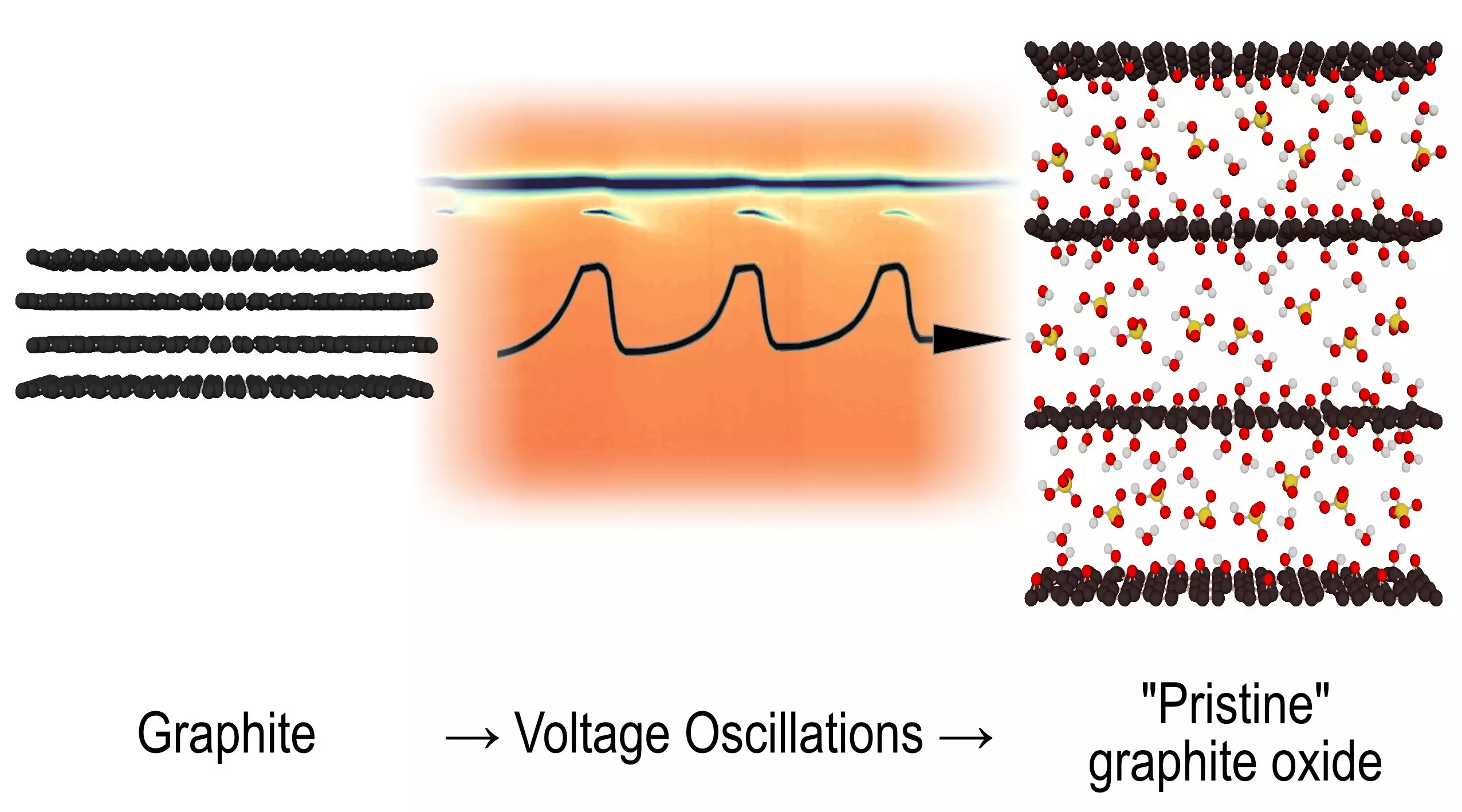For decades, the field of chemistry has grappled with a perplexing reaction—one that remained unexplained for 50 years. This bewildering riddle has finally found a solution, thanks to groundbreaking research from Umeå University. Researchers here have unlocked the mystery of how graphite undergoes a transformation into graphite oxide during electrochemical oxidation. Utilizing advanced techniques, they have captured rapid structural changes that reveal a dynamic journey of this process, classified now as a unique type of oscillating reaction.
Oscillating chemical reactions hold a captivating allure, showcasing how compounds cycle through various states. In traditional chemical reactions, one might observe colors shifting in a solution, either brightening or dimming prior to settling into a final state. These phenomena are not only visually interesting but also crucial for understanding complex systems, both in the realm of chemistry and the broader frameworks of nature. Umeå’s research is now elevating these oscillations from mere curiosity to a subject of profound scientific inquiry.
Until now, it has been understood that applying voltage to a graphite electrode submerged in a sulfuric acid solution could invoke spontaneous oscillations. However, while the final product of this reaction—graphite oxide—was known, the intermediate steps involved in the construction and deconstruction of this material remained a mystery. Commenting on the significance of their exploration, Alexandr Talyzin, a physicist at Umeå University, remarked that the series of oscillations occurring during the reaction were more than just a fascinating spectacle; they opened inquiries into the deeper mechanics of chemical behavior.
A pivotal shift in this investigation arose through the application of advanced synchrotron radiation methods. The ability to conduct X-ray diffraction scans in a matter of seconds meant that researchers could capture fleeting snapshots of the material’s structural transformations during the oxidation process. This innovative technique permitted a level of detail that had been previously unattainable, allowing the research team to observe a transient intermediate stage characterized by a unique structure—a structure that would appear, vanish, and then reemerge in a cyclical pattern.
According to Bartosz Gurzeda, the study’s lead author, this unearthing of a new oscillating reaction represented an unexpected turn from a routine chemical study to an exploration of significant theoretical implications in the fundamental chemistry domain. The team also documented these periodic changes through a compelling video that visually encapsulates the dynamic characteristics of the sample over time.
At the crux of this discovery lies a profound connection to chemical kinetics and reaction mechanisms, which could pave the way for fresh theories and models in chemistry. Previously considered a domain isolated from oscillating behavior—commonly observed in biological systems—this breakthrough invites chemists to rethink their understanding of non-equilibrium processes. The pioneering work of Ilya Prigogine, who received the Nobel Prize for elucidating oscillating reactions in 1977, now finds new relevance, as the Umeå team posits that their finding may give rise to even more instances of oscillating reactions yet to be discovered.
This revelation signifies not just an isolated instance of research success but rather a ripple effect that may encourage renewed inquiries into oscillatory behaviors across both organic and inorganic chemistry. Talyzin expresses an optimistic vision that subsequent theories will emerge to elucidate this novel oscillating reaction framework.
The research conducted by Umeå University is not simply a matter of explaining a long-standing chemical conundrum; it represents a vital pivot point for future explorations within chemistry. The clarion call to investigate further oscillating reactions stands as an invitation to scientists worldwide to broaden the horizon of chemical understanding and unlock answers to phenomena previously deemed inexplicable. As we stand on the precipice of new discoveries, the implications of this work remind us that the intricate dance of atoms and chemical structures may still have much to reveal.


Leave a Reply